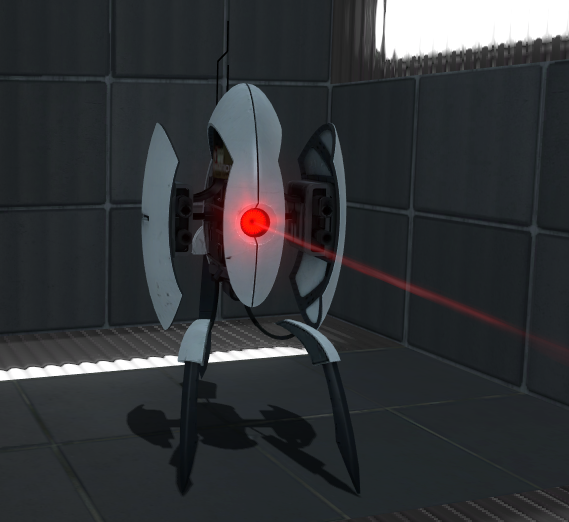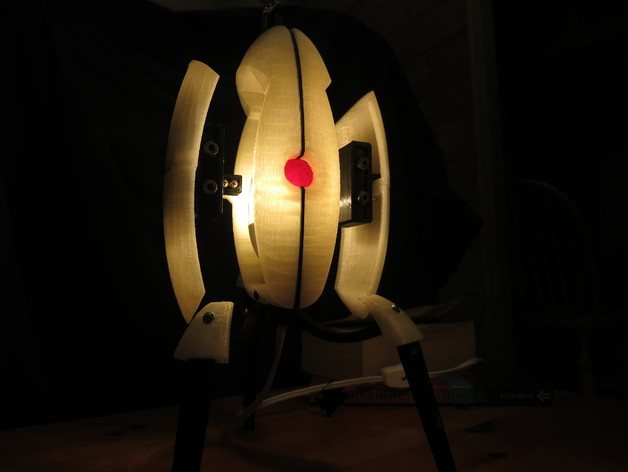

Unlike glass, turrets do not appear to recognize Chell if she stands behind one however, since the turrets appear to aim with infrared lasers, it could be argued that the light from the bridge interferes with a turret's ability to detect targets (as both are very close on the electromagnetic spectrum, as seen here).

ATLAS and P-body must utilize this method to pass one of the chambers of the Mobility Gels Cooperative Testing Course. The Mobility Gels are applicable on the bridge, allowing Test Subjects to use the gels in places where it normally would just fall through. To achieve this, each emitter is attached to a support beam in a lineup, as the quality and strength of the surface is tested against a concrete wall. In the factory, it is revealed that the bridges, like the Sentry Turrets, are required to pass a quality monitoring before they can be put into testing. In the cooperative campaign of Portal 2, ATLAS and P-body are sent to the Hard Light Bridge Factory in the Hard-Light Surfaces Testing Course.
#Portal turret light portable
Vertical bridges act more as portable walls that can be used as obstacles (for example, to intercept Weighted Storage Cubes). Horizontal bridges can be walked upon, and players can continue seamlessly along them through any portals they pass (given enough headroom). Only do this if you were capable of doing this yourself anyway but can do it quicker with my files.The Hard Light Bridge is a translucent but solid surface that can be redirected through portals to reach or serve as a blockade to certain areas.īridges may be emitted horizontally or vertically depending on the position of its emitter. I also cannot guarantee that with all the files you will get a complete turret. The turret takes ages to build (I have over 6 months clocked in this so far) and requires skills in mechanics, 3D printing, electronics and programming (both embedded and software) to get working. The source files, given without any guarantee that they will be helpful. A camera in the head can see wherever the turret can shoot, and speakers in the base allow the turret to speak. Ultimately the pi makes the decisions, though the Arduino is the one that does all of the moving and shooting. Controls: The turret is controlled using an Arduino Mega for the movement, and a Raspberry pi 3+ for the talking and watching.

Each gun holds around 18 darts and can shoot 2 darts per seconds. The theoretical speed of each dart is over 100km/h, though in reality it is probably a bit lower. The flywheels are made of quadcopter outrunner motors, and spin at 25000 rpm. 4 Nerf guns: The turret contains 4 fully functional nerf guns that use flywheels to launch the darts.All movements use either hobby servo’s or DC motors with potmeters for feedback. It can move around 20 degrees in all directions, both with the guns and the laser. Movement: The turret can open and close automatically.All of the mechanisms that move are 3D printed. All the smooth white parts are 3D printed. Over 300 hours of 3D printing: The turret is an absolutely massive print, containing hundreds of parts.To follow that route from idea to turret, visit the making of part 1 and part 2.

It was later revisited for CCC camp 2019 and finished properly. By then, it was capable of doing everything it can do now, just worse. The turret was originally made for SHA2017 as a show piece. Best of all, it has 4 fully functional nerf guns that together can shoot up to 400 rounds per minute. It has a laser which can be aimed, and a light up eye. This is a scale 1:1 turret from the game Portal with all things a turret should be able to do.


 0 kommentar(er)
0 kommentar(er)
